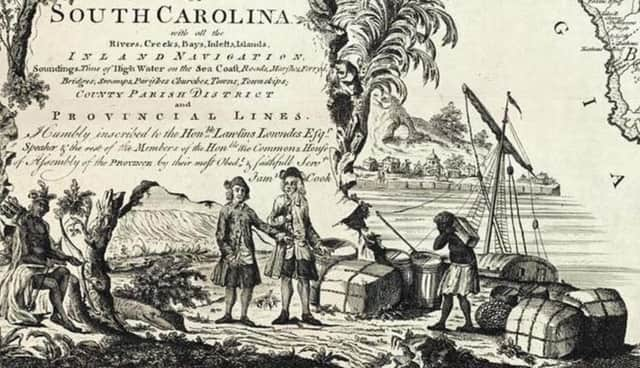Scotland's forgotten colony in America that was burned to the ground


This stretch of the South Carolina coast was a long way from 17th Century Scotland.
The reconnaissance trip to Port Royal in 1682 was to map out one of Scotland's first overseas colony with Stuarts Town created at least a decade before ill-fated Darien Scheme on the Isthmus of Panama in the late 1690s.
Advertisement
Hide AdAdvertisement
Hide AdBut despite this early bold push of Scots imperialism, the project at Stuarts Town is barely remembered.
Burnt to the ground after just two years by Spanish privateers after the Scots linked up with a local indigenous tribe, it was abandoned before it barely took root.
Historian Peter N Moore has researched "Scotland's lost colony" with his findings published in the latest edition of Scottish Historical Review, published by Edinburgh University Press.
"Of all of Scotland's imperial misadventures in the 17th Century, non has been so easily forgotten as Stuarts Town," he said.
As well as giving Scotland a much needed colonial port in the American market, Stuarts Town was intended to be a Presbyterian refuge populated by Convenanters who were facing increasing religious persecution in Scotland for their resistance to Charles II's attempts to bring in a new liturgy.
The Carolina Company was set up to advance the creation of the colony, with its key figures, Sir John Cochrane of Ochiltree and Sir George Campbell of Cessnock, deeply involved in in Presbyterian resistance, Mr Moore wrote.
The Earl of Shaftesbury, a leading Whig and proprietor of the Carolina Company, was also rooted in the resistance movement.
Backed by the Duke of York , the company was granted permission to secure colonies in America that were exempt from English trade restrictions and would help build a new foreign trade that would boost Scotland's ailing economy.
Advertisement
Hide AdAdvertisement
Hide AdSites from New York to Suriname were looked with two finally selected - East New Jersey and South Carolina, Mr Moore wrote.
On the 1682 reconnaissance trip, Port Royal was found to be an attractive choice given its warm climate and a long growing season.
One thousand settlers were promised with "subscribers made up a dense network of family, friends and business associates with a common commitment to presbyterian independece from the Scottish episcopal church," Mr Moore said.
He added that "the business of the Carolina Company was never separate from the religious concerns at its core."
The new settlers set sail in 1684 and made their home in the Port Royal borderlands squeezed between their English neighbours at Charlestown, the Spanish colonialists of Northern Florida and the lands held by warring indigenous tribes.
" Like Scotland, Port Royal and its borderlands were chronically violent and unstable places that bred fear of displacement, enslavement and death, but unlike Scotland they lacked a centralised power, giving the Scots an opening to make their bid for empire," Moore said.
Of particular interest to the Stuarts Town Scots were the indigenous population, according to accounts, lived in simplicity, worshipped the New Moon and who were viewed as possible easy converts to Christianity.
The reportedly had ' great kindness' for the English but not the Spanish with the Scots keen to pursue economic and political ties.
Advertisement
Hide AdAdvertisement
Hide Ad"It would be no surprise if company officials dreamed of an intimate interracial community of Scots and christianised Indians, living harmoniously in well ordered touns under the cop of reformed protestant practice," Moore wrote.
But Stuarts Town was not to last with the colony razed to the ground by Spanish privateers in 1686, just two years after its founding.
According to the South Carolina Encyclopedia, the colonists negotiated an alliance the Yamassee, inheriting the Yamassees’ ongoing conflict with the Timucuans, who were under Spanish protection.
Peace held for a few months, but in March 1685 several Scots accompanied a Yamassee raid against the Timucuans at Santa Catalina.
Spanish retribution arrived in August 1686.
Three Spanish galleys and some 150 troops overran Scottish defences. The Scots were allowed escape but the town was plundered and burnt to the ground.
It was never rebuilt.
Mr Moore said: "Investors quietly withdrew their support, few people outside of Carolina even noticed its passing and the colony's principal organisers quickly went on to to bigger and better things
"Overshadowed by the Darien venture's much more spectacular failure the following decade, Stuarts Town slipped from historical memory and for more than two centuries was neglected or dismissed by historians."
He added: "Stuarts Town was forgotten almost as soon as it began."
